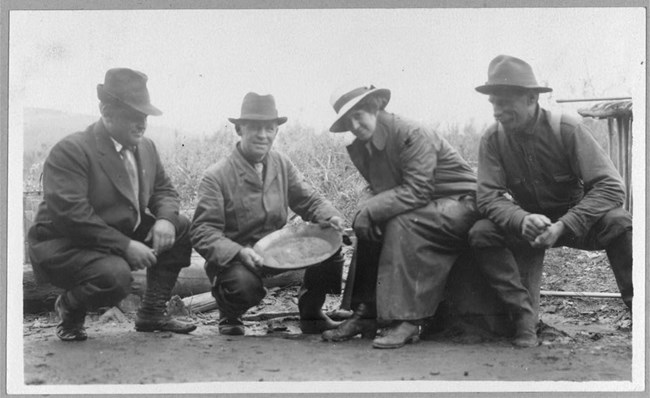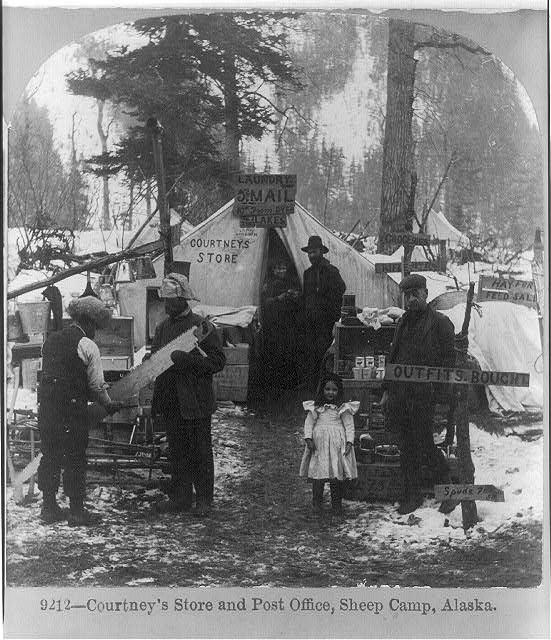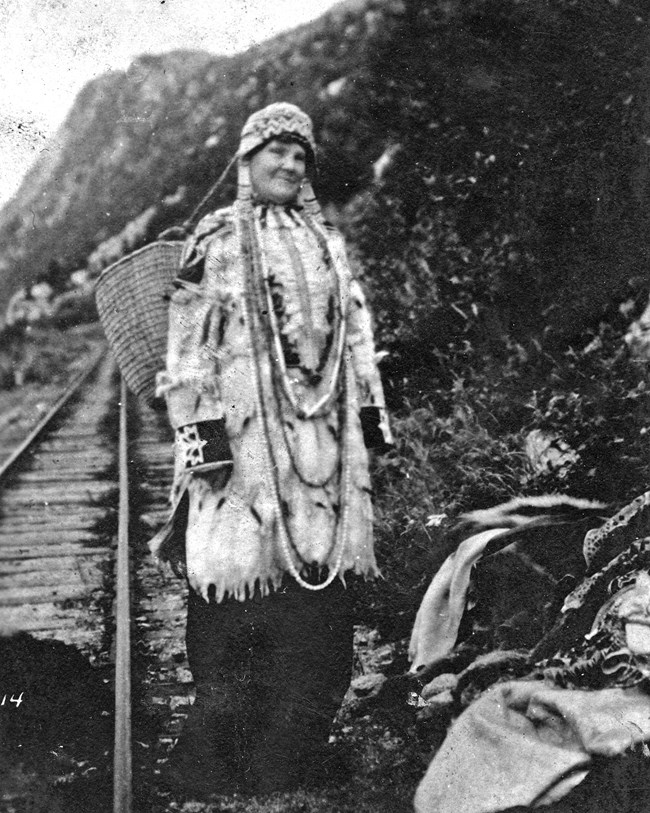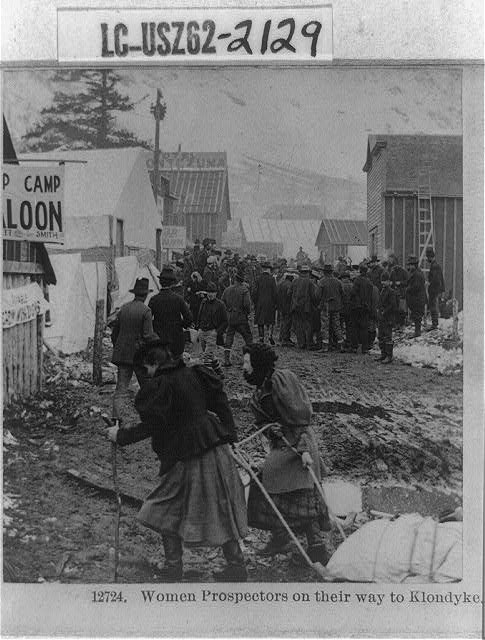Last updated: August 19, 2020
Article
Women Who Went To The Klondike

Library of Congress, LC-DIG-ppmsc-01705
Breaking The Norm
Few women braved the cold, wet climate and unknown circumstances of the Alaskan wilderness in the mid-1890s. It was a world dominated by men. Yet charming and attractive women who processed self-reliance and determination saw the gold rush as a golden opportunity. They approached the frontier with high spirits and feistiness to eagerly embrace adventure. Some women came from desperation to support themselves and families. Others looked confidently at fulfilling their life beyond being a dutiful housewife. Each brought with them vision to make their own decisions and choices to determine their very existence. Everyone was hoping to improve their fortunes if they could.
Library of Congress, LC-USZ62-57308

National Park Service, Klondike Gold Rush National Historical Park, George and Edna Rapuzzi Collection, KLGO 57565. Gift of the Rasmuson Foundation.
Harriet Pullen Comes To Skagway
Harriet Pullen's success at mining the system is closely associated with Skagway and the transition from frontier boom town to a more settled community. Harriet arrived in Skagway with early fortune seekers in the fall 1897, and started out like many others, broke, but optimistic and ambitious. Upon her arrival, she said:
Library of Congress, LC-USZ62-120296
While visiting her mother near Port Angeles, Washington, Harriet boarded the ship hoping to enjoy rest and relaxation. The ship, Gertrude, left the port in a snow storm and howling gale at night. The ship Captain soon tried to take refuge and find safe harbor in a calm bay but mistook his bearings. The ship struck rocks head-on and could not be backed off; terrible rough seas were boiling up around them. Two tug boats came to the rescue in the early morning light but the seas were still very rough. Harriet managed to get into a life boat; but when she tried to climb ashore, a huge wave came over the boat, flipping it with Harriet underneath in the swirling waters. She maintained presence of mind and bravely made her way to the edge of the boat. She was gallantly rescued by a small whaling vessel and met by friends at the dock. It was said that Harriet was the only white woman who underwent hardships of the wreck and although she was fearless, underwent the most terrible experiences of all. Harriet lived out her life became affectionately known as "Ma Pullen" with respectful notoriety, sharing her hospitality with visitors in her vibrant hotel until she died in 1947. Harriet Pullen is a great example of women who honed their business skills to succeed during the gold rush and seized opportunities that came along with the mad rush. What about the actual mining game- using shovels and gold pans?

Library of Congress, LC-USZ62-2129
Nellie Mines The Klondike
The stand-out woman miner is perhaps Nellie Cashman, who arrived in Alaska with experience from boom towns all over the West. Prior to the Klondike Gold Rush, Nelly prospected in British Columbia, Arizona, Mexico and South America as a world traveler, backed by her steady income from managing boarding houses and restaurants. When Nelly joined the Klondike Gold Rush in February 1898, she was not married and traveled with her nephew and another young man. The three of them arrived in Dawson too late to stake claims, so Nellie opened a store to support her mining passion. Several claims later found her no richer and often embroiled in controversy over property disputes.However, her charitable lifestyle and religious beliefs made her popular in the community; she engaged in fund raising activities to support the local hospitable and donated liberally to her church. On April 22, 1900, the Klondike Nugget said this about Nellie Cashman:
Life In The Klondike
Remote areas attracted women like Nellie Cashman and other frontier women who could live far from the comforts of civilization. Another Gold Rush woman spent her honeymoon trip in the fall of 1895 going over the Chilkoot Pass with a dog team and sleds. She reportedly wore her Alaskan Uniform consisting of heavy flannels, a warm dress, moccasins, fur coat, cap and gloves, rolled up in full robe and bound to the sled. This hard working woman was Ethel Berry, who spent two months alone in a tiny cabin while her husband Clarence worked out in the gold fields and creeks. The Berrys heard about George Carmack's discovery on Bonanza Creek and immediately moved near there, staked a claim and Ethel soon became known as the Bride of the Klondike-one of the first Klondike millionaires.
National Park Service, Klondike Gold Rush National Historical Park, Stinebaugh Collection, KLGO 0004.009.001.005e.
This article was orginially written and edited as a KHNS radio talk.
